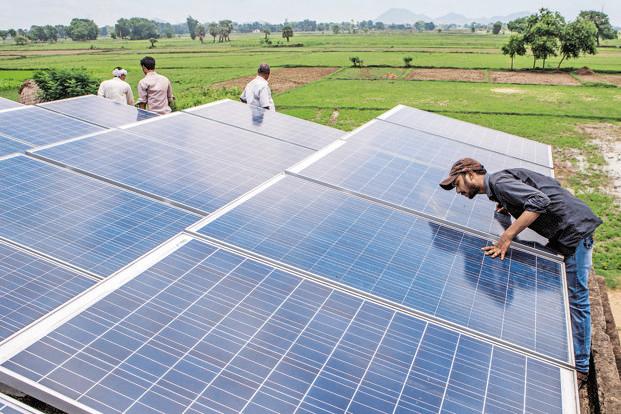New Delhi: West Asian investors are looking at acquiring green power assets in India for the first time, lured by the government’s push for renewable energy.

Doha-based Nebras Power QSC and Dubai’s private equity firm Abraaj Group are evaluating renewable energy projects, with Abraaj Group evaluating at least two operating green energy platforms for investing in India.
This development comes in the backdrop of India’s growing focus on the Gulf region in the era of depressed oil prices.
“West Asian investors are looking at the Indian green energy space for the first time,” said a person aware of the development, requesting anonymity.
Abraaj Group has $9 billion under management with a focus on private equity investing in growth markets.
Qatar Electricity and Water Co. has a 60% stake in Nebras Power, with Qatar Holding LLC and Qatar Petroleum International Ltd holding 20% each in the company, which invests “in international greenfield and brownfield development or through acquisition”.
Nebras Power recently signed an agreement with Qatar Development Fund to invest in energy projects in other countries.
West Asian companies are seeking opportunities in India at a time when crude oil prices have fallen, impacting the investments made in conventional energy projects. This is expected to worsen with the likely lifting of trade restrictions on Iran and indications of a slowdown in the Chinese economy.
Crude oil prices in the Indian energy basket averaged at $56.30 per barrel in July, as against $84.16, $105.52, $107.97 and $111.89 in 2014-15, 2013-14, 2012-13 and 2011-12, respectively.
While an external spokesperson for Abraaj Group declined to comment, Nebras Power couldn’t be immediately reached for comments.
Of the 189.43 million tonnes per annum (mtpa) of crude oil sourced by India last year, 109.76 mt came from West Asia.
The National Democratic Alliance government has been trying to tap West Asian countries for investing in Indian infrastructure projects without much success.
The initial focus was to attract investments from Saudi Arabia, Qatar, the UAE and Kuwait. The plan didn’t succeed.
Investments from the UAE so far have amounted to $10 billion. According to government data, India-UAE trade, valued at $180 million per annum in the 1970s, is currently at around $60 billion, making the UAE India’s third largest trading partner in 2014-15 after China and the US. The UAE was the second largest export destination for India ($33 billion for 2014-15). For the UAE, India was the largest trading partner for the year 2013 (over $36 billion in non-oil trade).
The government has pushed renewable energy to the top of its energy security agenda and is looking to provide green power at less than Rs.4.50 a unit. India needs as much as $200 billion to meet its target of installing 100 gigawatts (GW) of solar power and 60,000 megawatts (MW) of wind power by 2022.
“Ind-Ra (India Ratings) expects a strong pick-up in solar power installations over the next four-five years, driven both by the government impetus of 100GW of solar power by FY22 (60GW through grid-connected solar projects) and a decline in solar power generation costs,” India Ratings and Research, the domestic arm of Fitch Ratings, said in a 22 July report.
There has been growing interest from overseas investors in the Indian renewable energy space.
Russia’s OAO Rosneft, the world’s largest publicly traded oil company, among others are exploring investments in India’s solar energy sector.
In June, SoftBank Corp., along with Bharti Enterprises Ltd and Taiwan’s Foxconn Technology, proposed to invest at least $20 billion in solar energy projects in India through a joint venture, SBG Cleantech Ltd. US-based First Solar Inc. and China’s Trina Solar are among those considering plans to set up manufacturing facilities in India.
US-based SunEdison Inc. had also said it plans to establish a joint venture with Adani Enterprises Ltd to build a solar photovoltaic manufacturing facility with an investment of $4 billion.